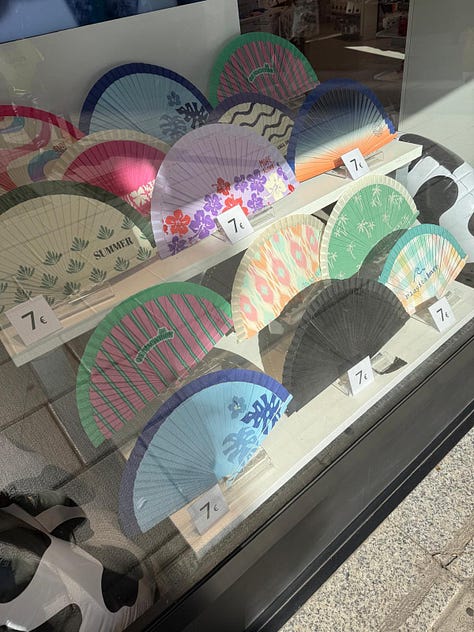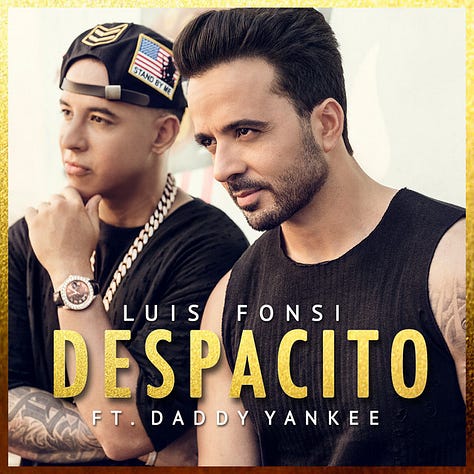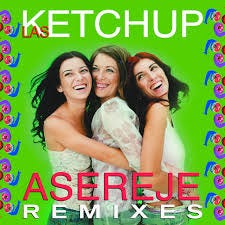As far as I knew, Quevedo was a famous Spanish writer, politician, and nobleman prolific in the early 1600s, the Golden Age of Spanish literature, and the name of the Metro stop two blocks from our apartment. I whipped my head around when I heard a song by Quevedo throbbing from a store that sold beach towels, dark glasses, handheld and battery fans, and coolers. This Quevedo is a twenty-four year old musician whose hits have landed on this summer’s top selections for Spain’s Songs of the Summer. I had no clue about this young artist and didn’t give him a second thought. That was a mistake.


Every year in Spain, artists compete for the most popular song for the vacation season. This tradition started in the 1960s when an Italian record company created a competition to determine the best record of the summer. In the 1990s and early 2000s, the most popular record evolved into the most listened to soundtrack. They now play on Spotify and other streaming channels.
Spaniards turn up the volume on their listening devices as the swelter slows activity. Summer songs sound more frequently from June onward to prepare young and old for some of their thirty calendar days of annual vacation. Many people take their legally required two consecutive weeks in the summer, often in August.



Summer songs share certain features:
· Simple lyrics
· Easy to dance to with tropical, happy beats
· A melody that loops in your head
A summer song that even I knew was “Macarena,” which thirty years ago won the honor for two consecutive seasons. This catchy, upbeat tune was created by a group in the southern city of Sevilla who based this piece on flamenco rhythms and Andalusian culture. The title comes from a popular girl’s name and the Virgin of Macarena, who is associated with hope, miracles, and traditions such as, understandably, bullfighting. After the Bayside Boys added English lyrics, the song shot to the top of the US Billboard charts for fourteen weeks. It rang through the sound system at the Democratic National Convention, the Atlanta Olympics, and the Super Bowl, making Spanish pop culture known to the world.



The modern day Quevedo, Pedro Luis Domínguez Quevedo, was born in Madrid and grew up in a city on Spain’s Canary Islands. After he studied at Columbia University in New York for a year, his reggaeton song “Columbia” made the Billboard Top 200, the chart ranking the two hundred most popular albums and extended plays. His song named after the elite university mentions he studied abroad, came back to the island, and found nothing to do. The rest describes his summer romance with an actress.
Even if it didn’t move me, it stirred a lot of people because in 2023, when the song came out, it reached number six in the Top 50 Global songs in Spotify and sold more than thirty million reproductions in its first ten days.
Quevedo and Puerto Rican music partner Myke Towers have a top 2025 summer song, Soleao, a mix of reggaeton and Latin trap. Experts say it evokes a feeling of the Caribbean and the sensation of the beach after sunset. The lyrics didn’t conjure that image in me but then again I had a hard time understanding their blurry enunciation.
Summer songs aren’t always by Spanish artists; Argentinians, Colombians, Cubans, Dominicans, and Puerto Ricans have also made the charts. They have moved from pop with flamenco roots in the 1970s and 1980s, to techno-pop and reggaeton in the 2000s and 2010s, to today’s Latin Afrobeat, modern African urban music―trends that reflect international tastes while keeping to Spanish tradition.
Catchy songs like “La Gozadera,” a reggaeton and salsa combo, “Despacito,” a reggaeton and Latin pop mix, and “Aserejé,” a flamenco and pop fusion with an accompanying dance step, made the top international charts in 2015, 2017, and 2002, respectively. I can vouch for the power of La Gozadera; the beat loosened my rigid hips and legs in my early Zumba classes and enabled me to relax and enjoy myself. (I suggest watching Aserejé because I think it represents best the summer spirit and a little silliness.)



At parties in Spain, people often dance the same steps to a song so it becomes a group activity enjoyed together.
Though the Quevedo of the 1600s marked the world with his poems, that doesn’t mean that the current Quevedo and other musicians and artists like him don’t serve an important purpose giving people pleasure. In these temperatures, anything that makes folks joyful in the summer and takes their mind off the heat makes a worthy endeavor. These artists’ music target young people but even us oldies move to the beat. They make music for everyone and do something good for mind and body.


How fun! I loved listening to several of the catchy tunes-they are so upbeat and joyful!
What a great topic for these very warm days. I had not heard about the summer song competition. And funny that we both picked music for this weeks topic: great minds know what to do when the weather heats up! 💃🏻💃🏻💃🏻
Very fun piece!